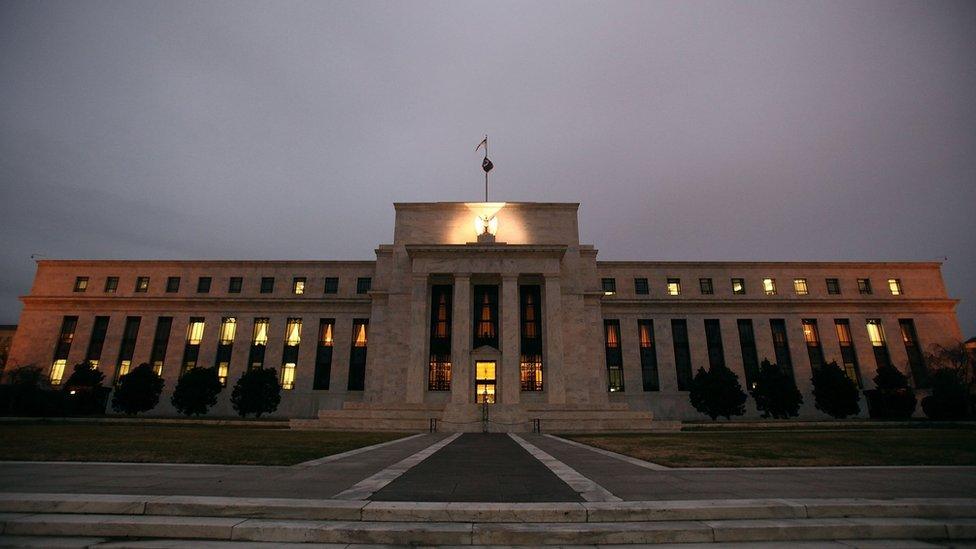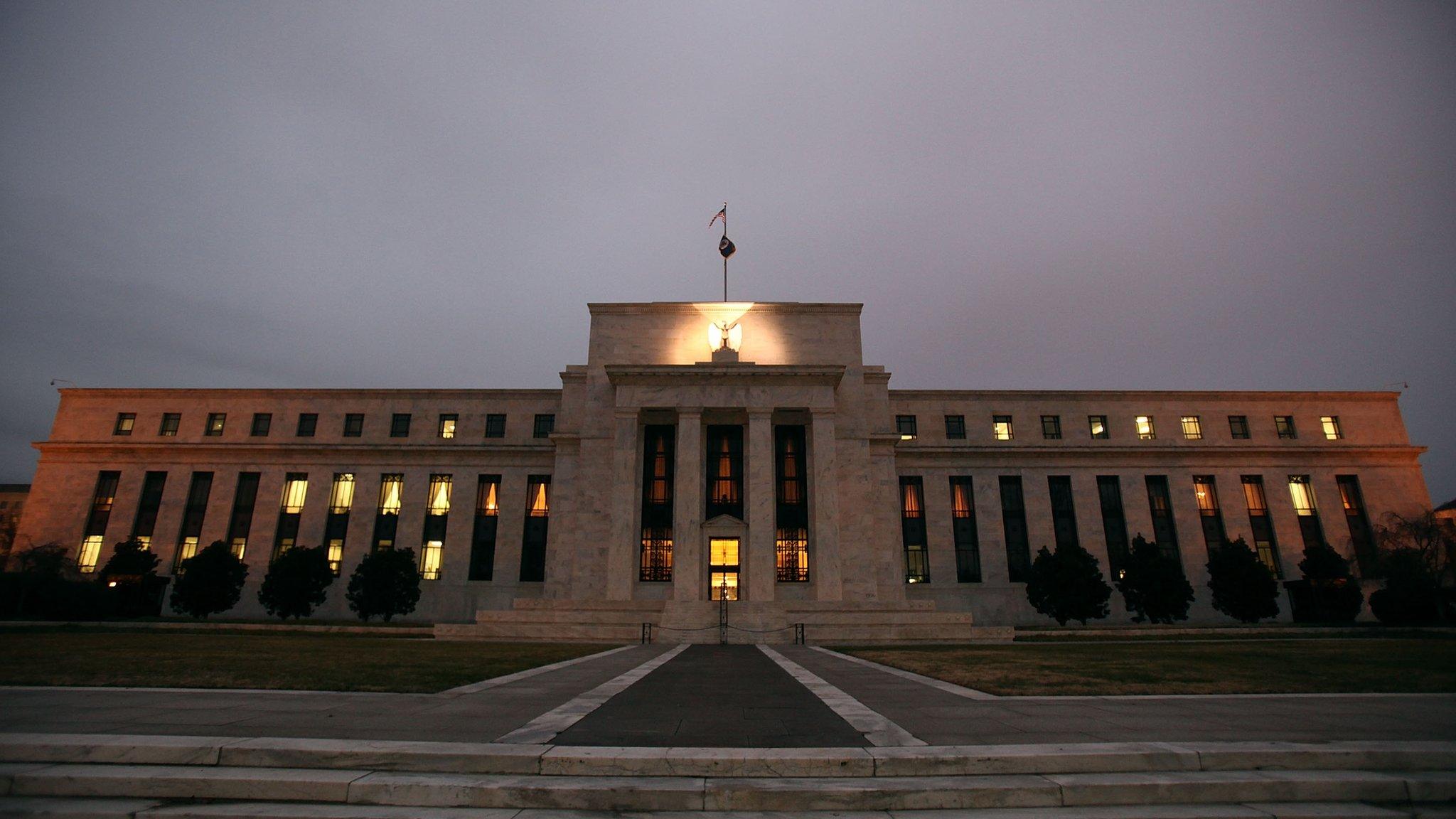US Federal Reserve says Brexit a factor in rates hold decision
- Published

The US Federal Reserve has kept interest rates at between 0.25% and 0.5% in the face of an uncertain jobs market.
The possibility of Brexit was one of the factors that led the US Federal Reserve to keep interest rates on hold, Chair Janet Yellen said.
The US central bank also said it expected a "slower path" for future rate rises.
It raised rates in December for the first time in nearly a decade.
On the 23 June UK referendum on whether to stay in the European Union, Ms Yellen said: "Clearly this is a very important decision for the United Kingdom and for Europe.
"It is a decision that could have consequences for economic and financial conditions in global financial markets.
"If it does so it could have consequences in turn for the US economic outlook that would be a factor in deciding on the appropriate path of policy," she added.
Meanwhile, the US Treasury cleared all bond sales on the 23 June.
Lou Crandall, chief economist at Wrightson ICAP, told Bloomberg Business, external that the Treasury alters its auctions calendar to avoid Fed monetary policy announcements, and that the UK referendum was a "similar kind of market event".
Rate rise prospects
Fed policymakers did not reveal when rates might rise, but the door has been left open for an increase when they next meet at the end of July.
Chair Yellen added: "Proceeding cautiously and raising our interest-rate target will allow us to verify that economic growth will return to a moderate pace, that the labor market will strengthen further, and that inflation will continue to make progress toward our 2% objective."
The Fed said in a statement that the pace of improvement in the labour market had slowed. The bank added, however, that "economic activity will expand at a moderate pace and labour market indicators will strengthen" even with gradual rate increases.

Analysis: Andrew Walker, BBC News
The key consideration in this decision was the US jobs market - with a little help from the uncertainties arising from the forthcoming British referendum and a few other factors.
We have had two months where job creation has been disappointing, especially May.
The Fed Chair Janet Yellen called it "something of a loss of momentum".
But she also said signs there were signs that the labour market is "approaching maximum employment" and it's important not to attach too much importance to one data point.
She - and, she said, the Fed's policy making committee - did not feel that "progress in the labour market has come to an end".
Which leaves us (or at least me) having to pore over the next jobs report to see how likely a rate rise is in July.
At this stage it doesn't look very likely, but it is not altogether off the table.

The dollar fell against the euro and sterling, but Wall Street held on to earlier gains, with the S&P 500 up 0.3%.
The Fed expected the unemployment rate to stand at 4.7% by the end of this year, before falling to 4.6% in 2017 and remain at that level in 2018.
In May, US job creation fell to its lowest level in more than five years, after faltering in April.
Ms Yellen said it was important not to overreact to one or two monthly readings.
"That said, we will be watching the job market carefully," she added.
'Dovish'
The Fed now expects the US economy to expand by only 2% a year for the foreseeable future - slightly lower than the forecast in March.
Brian Jacobsen of Wells Fargo Funds Management said: "It's as dovish as the Fed can get without actually cutting rates."
Aaron Kohli of BMO Capital Markets agreed that the statement appeared "somewhat dovish", adding: "The market had expected them to moderate their tone a little bit given what's been going on and given the risk that we have in terms of Brexit."
- Published3 June 2016

- Published16 March 2016
